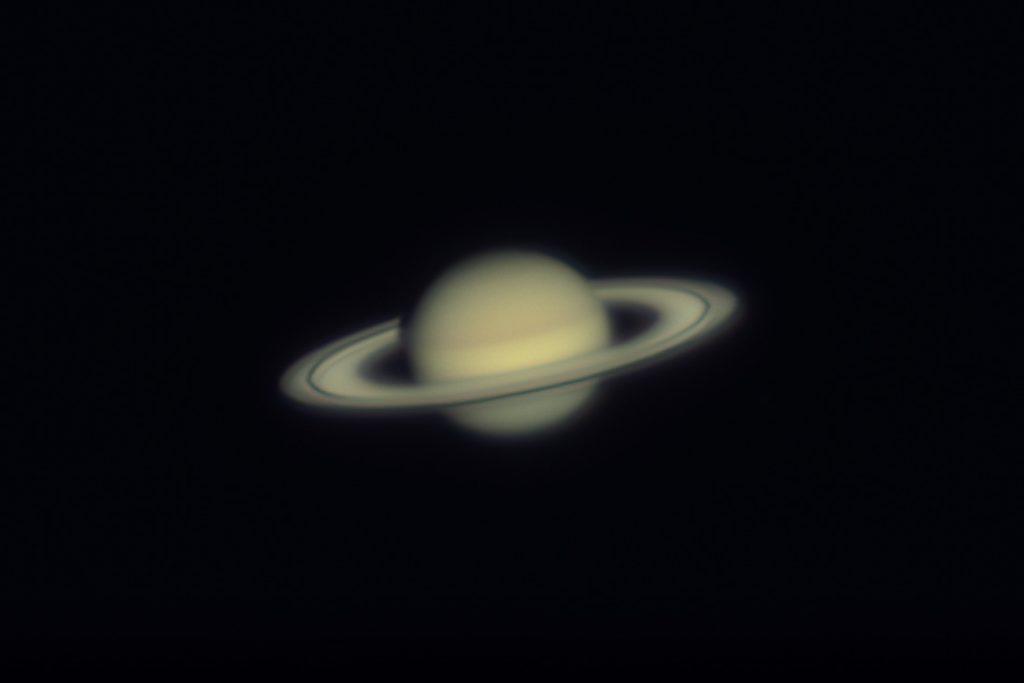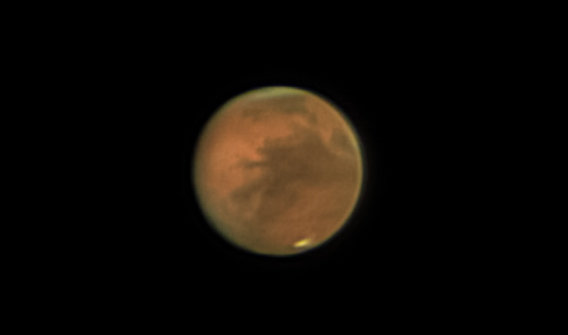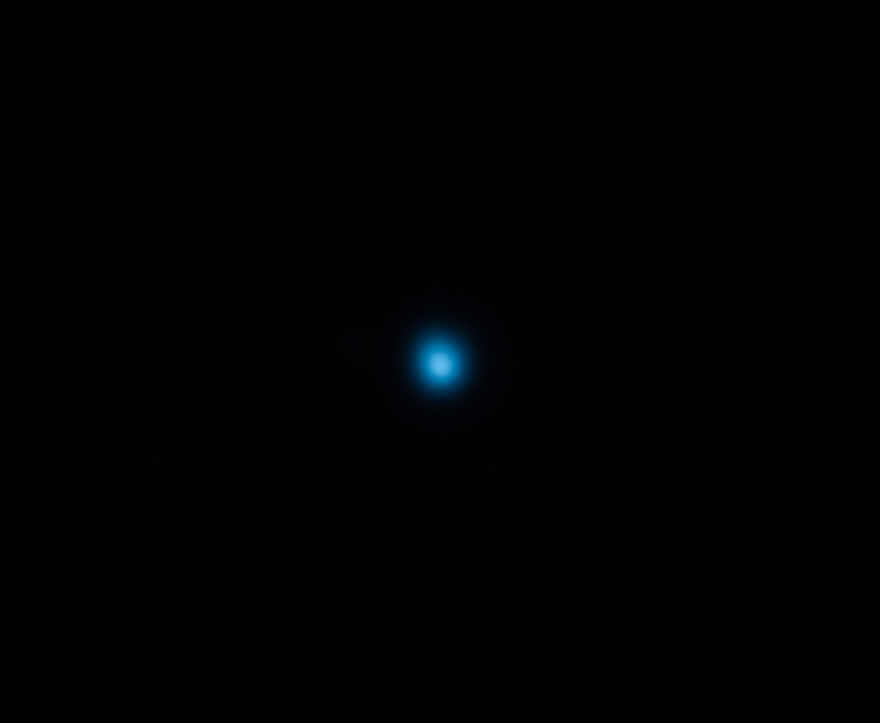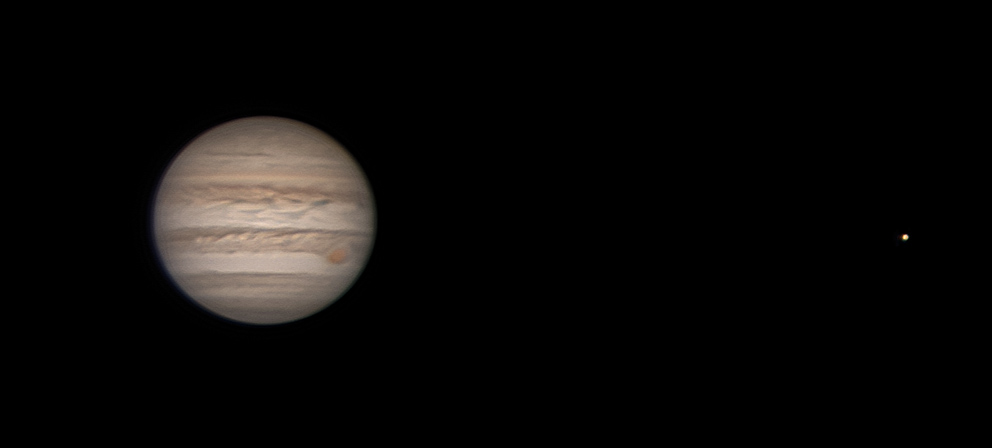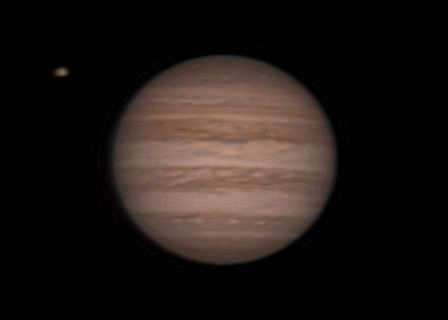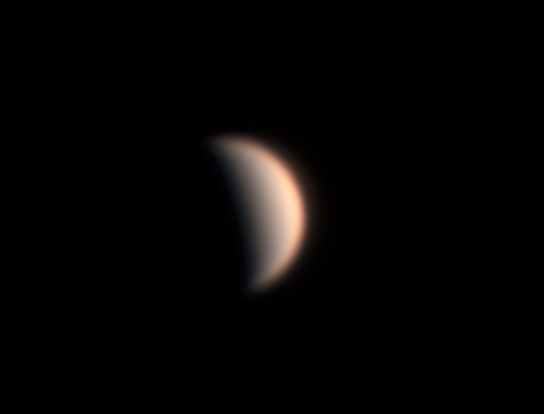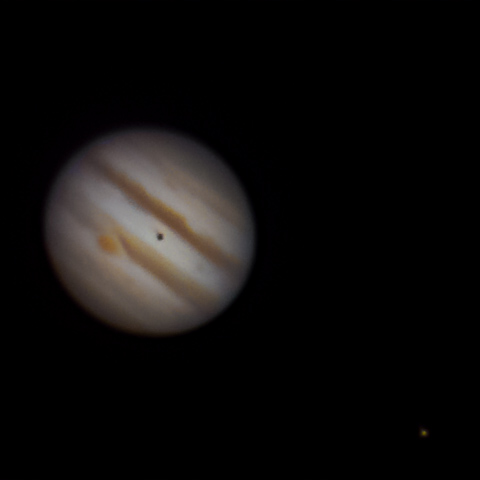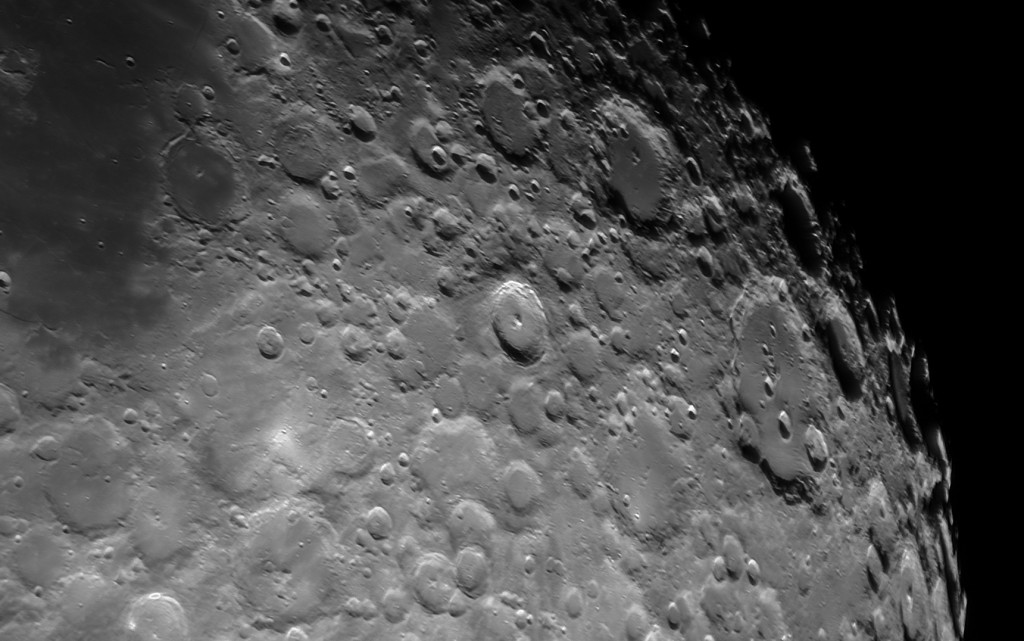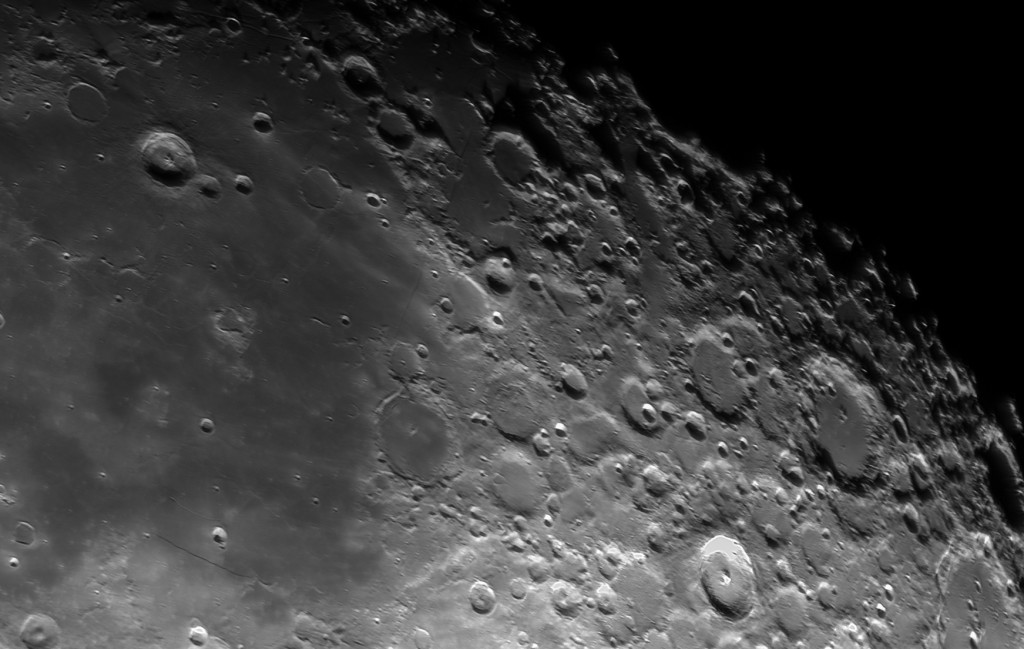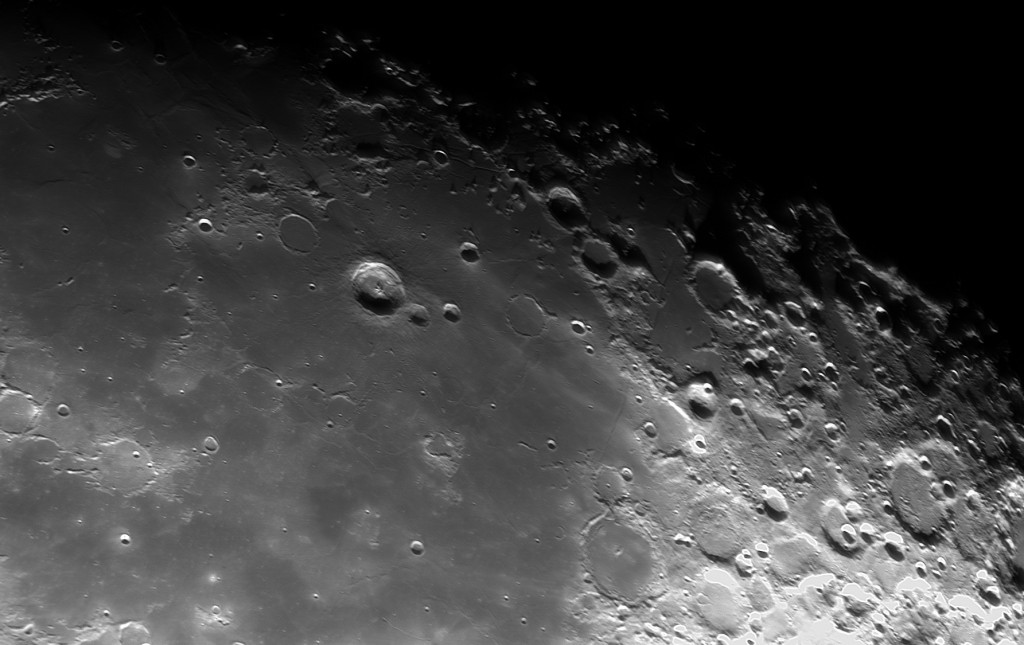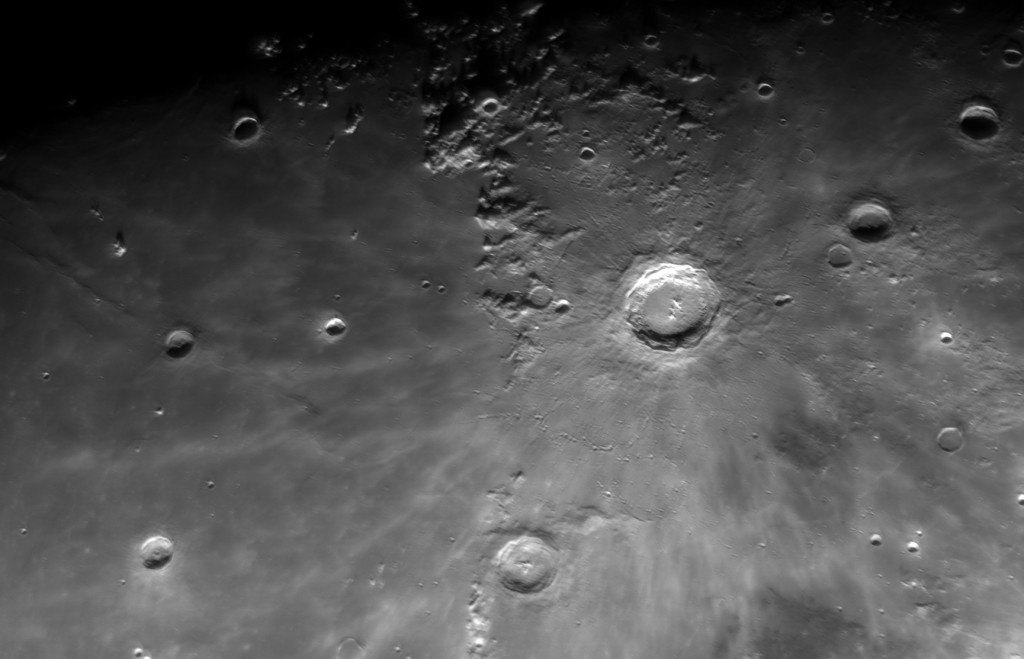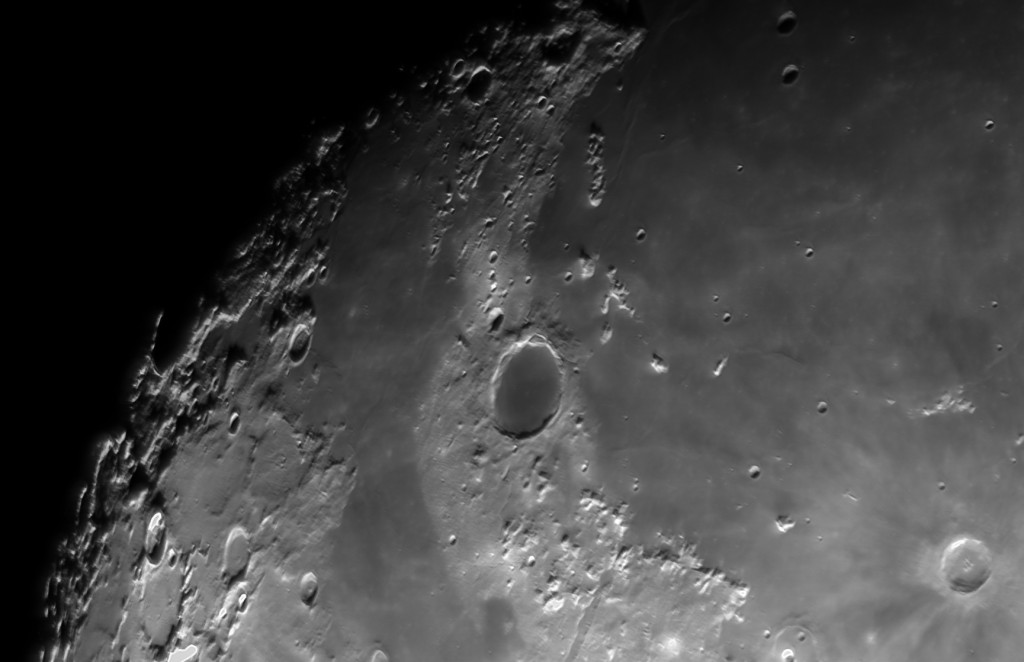This year was a special occasion to observe or photograph Jupiter. The biggest planet in our Solar system got very close to Earth. In fact, it was the closest in several decades. Such events force me to take an action. I had to wait for a cloudless night and took my biggest telescope out. Well, I must admit that the opportunity of Jupiter’s opposition is great but more important than the distance between the Earth and the observed planet is the quality of seeing. The light started the journey on Sun, then traveled 778 million km to Jupiter, got reflected and traveled 367 million km back to Earth, and got spoiled in the last 100 km when passing through the thick Erth’s atmosphere.
On 19.10.2022 I was extremely lucky because Jupiter’s moon Io was transiting and creating the eclipse. Moreover, the giant red spot was visible simultaneously. I captured a few shots and got the idea to capture more of them and compose a video. In total, I was photographing the event for nearly one hour and made 15 frames out of it. You can see how quickly Jupiter spins. One day on Jupiter takes only 9 hours and 55 minutes.
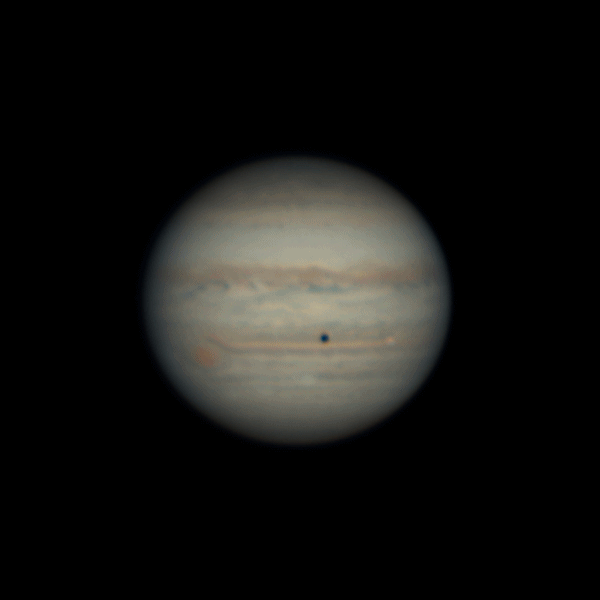
And here is a static picture:
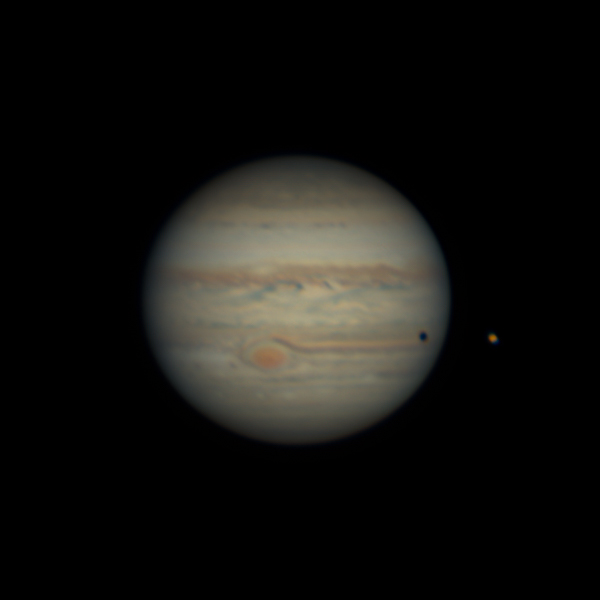
| Telescope: | Celestron EdgeHD C14 |
| Aperture: | 354 mm |
| Focal length: | 3910 mm |
| Mount | Gemini G53f |
| Autoguiding | no |
| Camera: | ZWO ASI485MC |
| Corrector: | no |
| Filters: | no |
| Exposure: | 4000xRGB (25% used) 18 ms gain 93 |
| Date: | 2022-10-19 |

